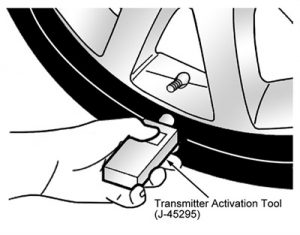Featured TPMS Tip: 2008 – 2017 Nissan Rogue and Rogue Select
 Mitchell 1 provides TPMS information to Modern Tire Dealer, an award-winning publication that writes editorial content geared to independent tire dealers. We’re sharing this content in our blog, with a link to the Modern Tire Dealer website where you can read the article in full. The TPMS information in this article may also be accessed in the reset procedures tab in our ProDemand® auto repair information software, along with other important reset procedure data for the selected vehicle
Mitchell 1 provides TPMS information to Modern Tire Dealer, an award-winning publication that writes editorial content geared to independent tire dealers. We’re sharing this content in our blog, with a link to the Modern Tire Dealer website where you can read the article in full. The TPMS information in this article may also be accessed in the reset procedures tab in our ProDemand® auto repair information software, along with other important reset procedure data for the selected vehicle
SUBJECT VEHICLES: Nissan Rogue and Rogue Select – 2008-2017
RELEARN PROCEDURE? Yes.
SPECIAL TOOLS NEEDED? Yes. A Nissan Signal Tech II scan tool or CONSULT scan tool can be used. A transmitter activation tool (J-45295) is used in the wake-up procedure and can aid in the registration procedure.
During driving 2008-2017 Nissan Rogue and Rogue Select models at speeds above 25 mph (40 km/h), the low tire pressure warning system receives the signal transmitted from the transmitter installed in each wheel, and gives alarms when the tire pressure becomes low. When the low tire pressure warning system detects low inflation pressure or another unusual symptom, the warning light in the instrument cluster comes on.
A sensor-transmitter integrated with a valve (installed on each wheel) transmits a detected air pressure signal in the form of a radio wave.
The tire pressure receiver receives the air pressure signal transmitted by the transmitter in each wheel. The body control module (BCM) reads the air pressure signal received by the tire pressure receiver, and controls the warning light and the buzzer operations. It also has a judgment function to detect a system malfunction.
Tire pressure monitor warning light
NOTE: When a spare tire is mounted or a wheel is replaced, the TPMS will not function and the low tire pressure warning light will flash for approximately one minute. The light will remain on after one minute.
The TPMS illuminates a low tire pressure telltale when one or more tires is under-inflated. If the system detects that air pressure is less than 27 psi (189.6 kPa) it will also sound a buzzer for 10 seconds and a “LOW TIRE PRESSURE” warning light will turn on in the instrument cluster display. The nissan rogue tire pressure light vehicle is also equipped with a TPMS malfunction indicator to indicate when the system is not operating properly. The TPMS malfunction indicator is combined with the low tire pressure telltale. When the system detects a malfunction, the telltale will flash for approximately one minute and then remain continuously illuminated. This sequence will continue upon subsequent vehicle start-ups as long as the malfunction exists. See the appropriate manufacturer service information.
When the tire pressure warning light comes on, immediately check the air pressure of all tires and adjust to the specified pressure. Make sure the warning light goes off. The warning light does not automatically turn off when the tire pressure is adjusted.
After the tire is inflated to the recommended pressure, the vehicle must be driven at speeds above 25 mph (40 km/h) to activate the TPMS and turn off the low tire pressure warning light. If the warning light stays on or flashes, there is a malfunction in the TPMS. See the appropriate manufacturer service information.
Reset procedures
NOTE: When a spare tire is mounted, or a wheel, tire pressure sensor or BCM is replaced, the tire pressure sensor must be registered.
The low tire pressure warning light does not automatically turn off when the tire pressure is adjusted. After the tire is inflated to the recommended pressure, the vehicle must be driven at speeds above 25 mph (40 km/h) to activate the TPMS and turn off the low tire pressure warning light.
Continue reading this article in Modern Tire Dealer:
https://www.moderntiredealer.com/article/725141/tpms-2008-2017-nissan-rogue-and-rogue-select

Read more:

